

|
|
|
1842
Variety 106a
Obverse 5.2: Polished Die, Residual Horizontal Die Lines Through Elbow
Reverse E.2: Polished Die, Die Line Between Left Wreath and Bow
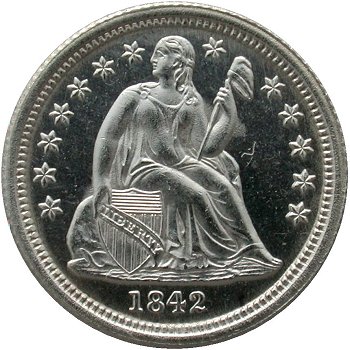
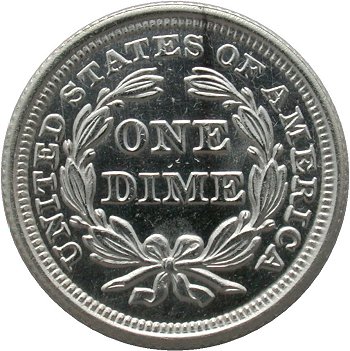
Obverse 5.2 Reverse E.2
Obverse Diagnostic Point(s)
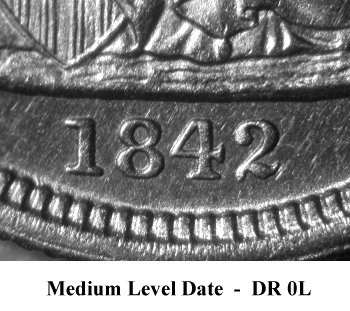
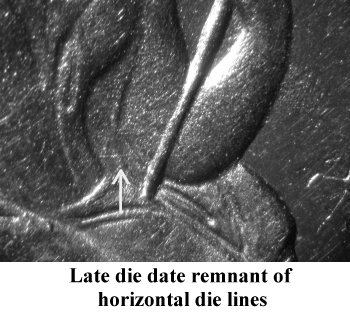
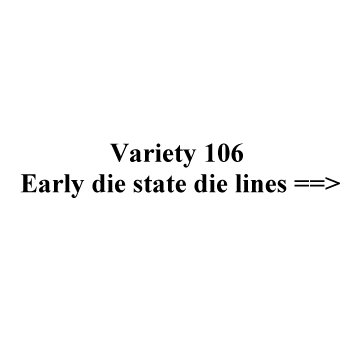
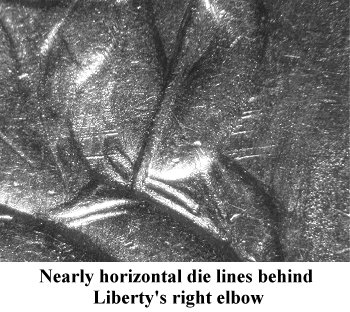
Comments: At the January 2011 FUN show, Larry Briggs invited LSCC members to view an 1842 Seated dime that he suspected might be a proof but did not match the date placement characteristics of Variety 108. For reference, Variety 108 date placement measurement is DR 0B1. I visited with Larry at his FUN table and upon inspection of the 1842 dime noted that the die pair was not that of Variety 108 but of Variety 106. Attributing 1842 die varieties by date position alone is difficult due to limited variation in date punch placement. However, Variety 106 can be easily diagnosed by nearly horizontal die lines behind Liberty's right elbow on the obverse and a subtle horizontal die scratch between the left wreath and bow on the reverse.
On the Larry Briggs Variety 106 specimen, the obverse and reverse fields are exhibit proof characteristics as a result of polished dies. Most interesting is the lack of continuation of the horizontal die lines through Liberty's elbow into the right field. Rather, those lines are removed as due to a polished depression in the die's surface in that area. The depression is visible starting at the right shoulder, through the pole and into the right field. This die characteristic has not been seen on Variety 106 business strike examples to date. The reverse die was confirmed to be Reverse E as paired with Obverse 5 due to the still visible horizontal die scratch between the left wreath and bow. I have designated this polished dies die state as Variety 106a.
I asked Larry to borrow the 1842 dime for further study and for inclusion in the web-book. Of importance is the question of whether this 1842 specimen is an intentional proof strike or the result of a random die polishing event. The response to this question is most significant since few examples of 1842 proof dimes are known. Checking the Heritage Auction Archives for information on 1842 proof dimes produced a single auction listing; the Phil Kaufman specimen graded NGC PF65 Cameo. This dime appeared at the 2008 Central States Numismatic Society convention Heritage sale and brought an impressive $37,375 with buyer's premium. Heritage supported the Phil Kaufman lot listing with the following commentary and research concerning 1842 proof specimens extant;
1842 10C PR65 Cameo NGC. Ex: P. Kaufman. The PR65 Cameo dime from the Phil
Kaufman Collection ranks as the finest known 1842 proof of the denomination.
Moreover, it once resided in the famous Norweb and Lovejoy collections. The
Kaufman specimen is the only one of seven coins given the Cameo designation
by either NGC or PCGS. NGC has also seen a PR64 and a PR65, and PCGS has graded
one each from PR62 through PR65.
The roster of 1842 proof dimes that we have developed consists of five different
specimens. Yet it is possible, if not likely, that more pieces are extant. We
say this because we are unable to account for any of the PCGS-graded examples.
While it is possible some of these are resubmissions or crossovers, it may be
that there are an unknown number of 1842 proof dimes in private collections
that have not yet crossed the auction block.
1. PR65 Cameo NGC. The Kaufman specimen. The Norweb Collection
(Bowers and Merena, 10/1987), lot 468; Allen F. Lovejoy (Stack's, 10/1990),
lot 211. The Norweb cataloger indicates that the provenance is unknown, but
believed to have been obtained circa 1908-1910.
2. PR65 NGC. Floyd T. Starr (Stack's, 10/1992), lot 361; Richmond Collection,
Part III (David Lawrence, 3/2005), lot 1237.
3. PR62 NGC. Superior (10/1990), lot 3491.
4. Proof. American Numismatic Society Collection.
5. Proof. Smithsonian Institution. Interestingly, Breen for some reason queries
"is it still there?"
Deeply mirrored fields establish distinctive contrast with the satiny motifs, confirming the Cameo designation. An impressive strike leaves strong delineation on the design features, further accentuating the device-field variance even more. None of the relief features present even the slightest hint of localized weakness. The fully brilliant surfaces are well cared for, revealing no more than a few unobtrusive ticks that are completely within the parameters of the grade. A minuscule spot between star 8 and the cap serves to pedigree the coin. A small lint mark is visible between star 12 and the knee, and an inverted U-shaped one occurs above the reverse bow.
One should notice that the Phil Kaufman specimen exhibited two lint marks on the obverse, one method to confirm a coin's origin as a proof strike.
Careful examination of the Larry Briggs specimen reveals an obverse lint mark in the right field adjacent to the right elbow. Therefore one must ask the question, "Is this Variety 106 specimen an intentional proof strike or a business strike from highly polished dies?" Please see the below image when considering a potential response.
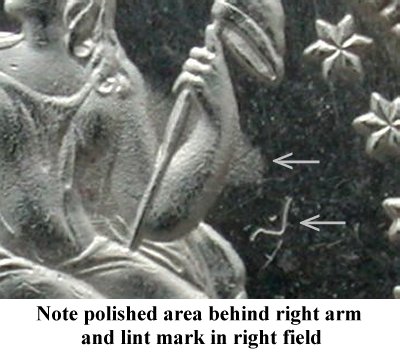
Plate Coin: Courtesy of Larry Briggs, Proof 64 Cameo?